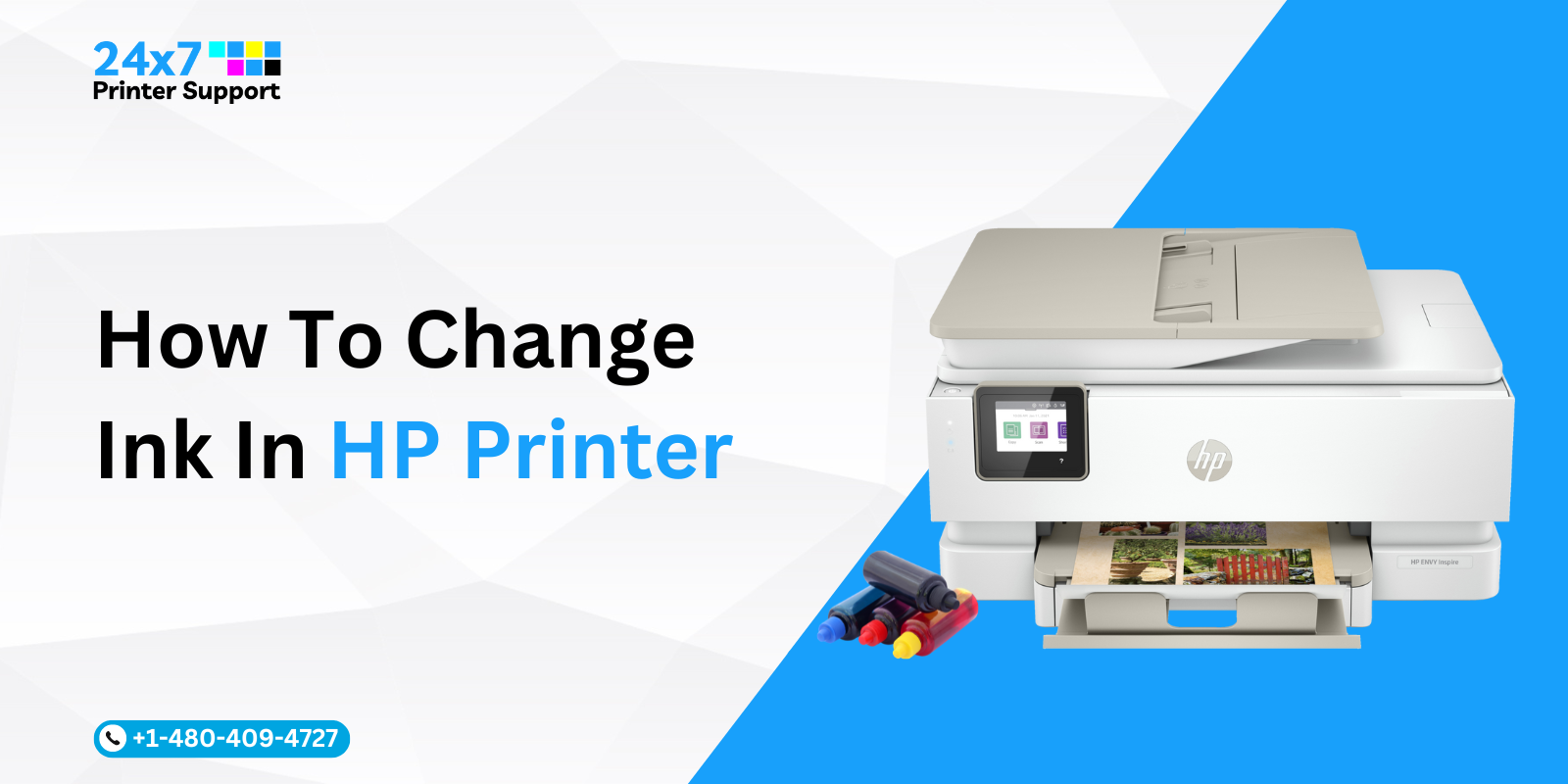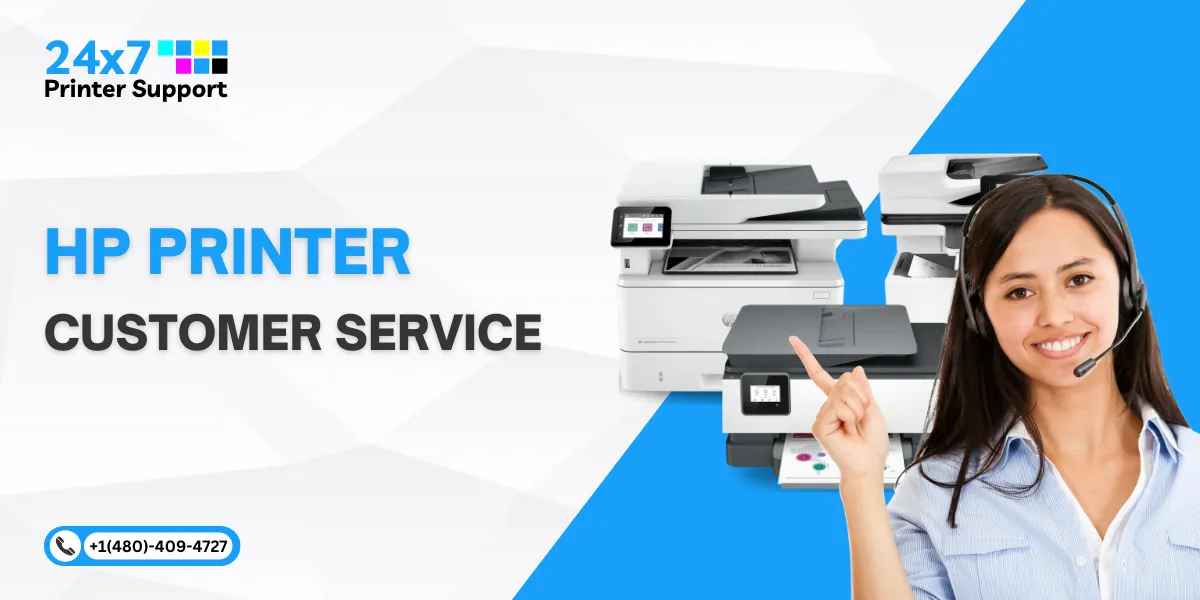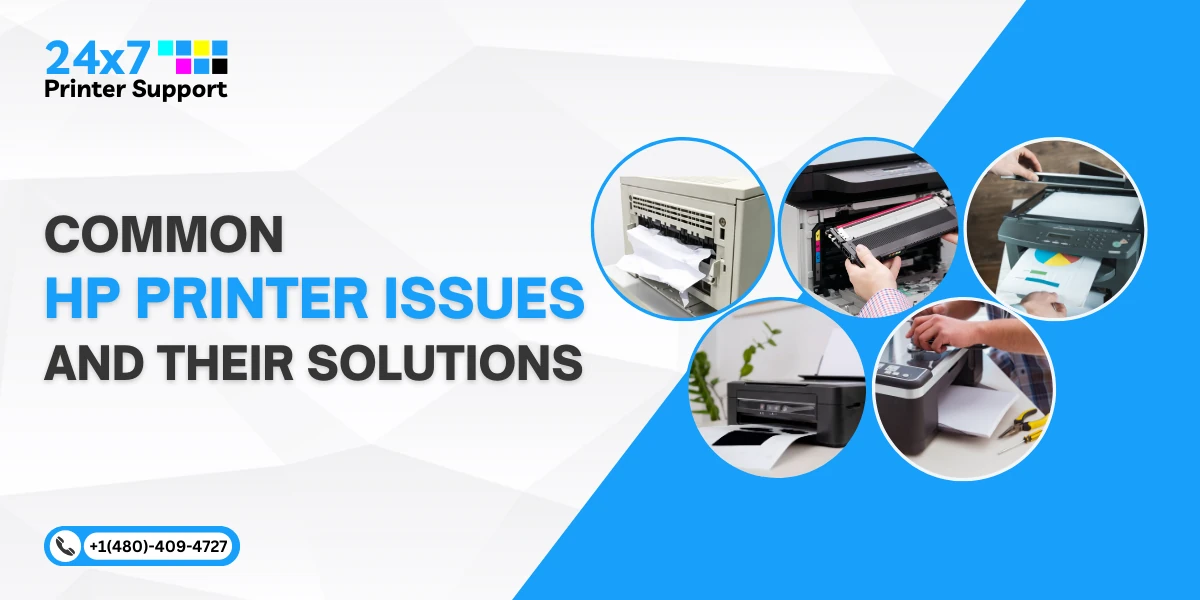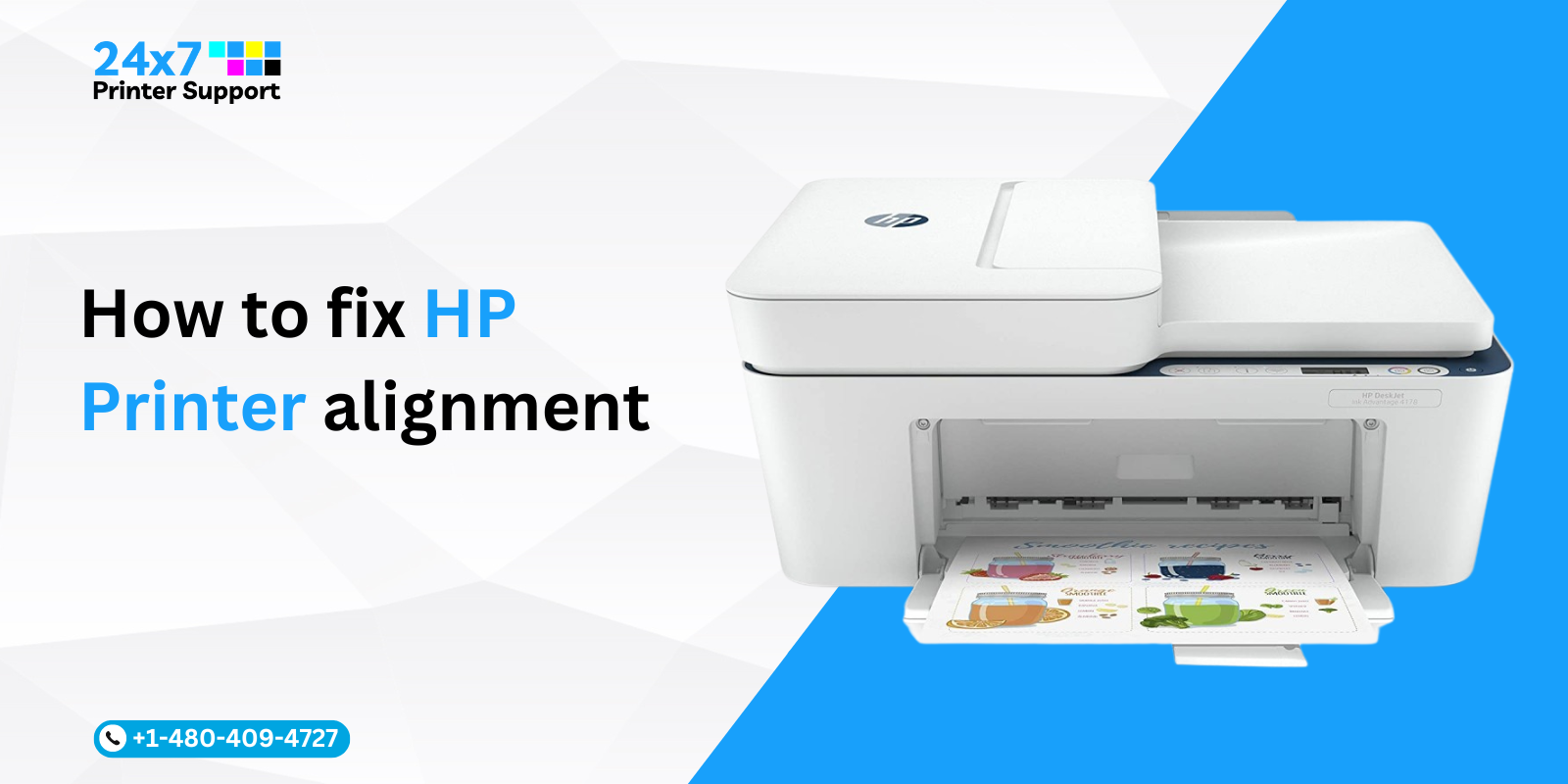HP printers have revolutionized the way we print, making it simpler and smarter than ever. Wireless printing allows you to print from smartphones or any other device – anytime or anywhere! Their intuitive user interface adds further convenience. To keep your HP printer functioning optimally its maintenance and care must be properly understood – including knowing when it comes time to change out ink cartridges when low – which this comprehensive guide covers.
How to Replace Ink in an HP Printer: A Step-by-Step Guide
With proper planning and preparation, changing ink can be an easy and quick process on an HP printer. This step-by-step guide is here to make the replacement as smooth as possible.
Step 1: Assemble Supplies
To ensure an effective ink cartridge replacement experience, be sure to gather all necessary supplies before beginning. This will allow for efficient cartridge swaps without hassles or complications.
Replaceable Ink Cartridges: To ensure optimal printer operation and print quality, be sure to purchase compatible HP ink cartridges for your model printer. Incorrect cartridges could lead to printing errors or produce poor-quality prints – check your printer manual or cartridge label to be sure that you are using the proper ink.
Lint-Free Cloth: To maintain a printer’s cleanliness and prevent ink stains, using lint-free cloth is key to maintaining its cleanliness and avoiding ink smudges or residue. This will also help ensure its optimal performance.
Small Container: Although optional, having a small container on hand is beneficial in keeping ink leakage at bay and protecting yourself from the potential mess caused by old cartridges that you plan to recycle. It is especially handy for this task!
Read More: Fix common HP printer problems
Step 2: Switch on the Printer
To make sure your HP printer works as intended, turn it on and connect to either a computer or network properly. It must recognize new cartridges once installed if they haven’t yet been seated and initialize them properly if it is unconnected or turned off.
Press the power button on your printer to activate it, then wait until it has fully recharged before using it.
Ensure that your printer is connected via USB or network. You can check its status via either your printer or computer.
Step 3: Open Your Printer Cover
To gain access to the ink cartridges, remove your HP printer cover. How you open it depends on its model number.
Lifting the Lid: For certain models, opening their printer requires lifting its lid to access its ink cartridges. In many instances, parts of the printer need to be lifted to access these cartridges.
Opening a Front Panel. Certain models feature a front panel that needs to be opened, such as a flap or door at the front of their chassis.
If you need assistance in unloading ink cartridges from your model’s printer, consult its manual for specific instructions.
Step 4: Remove Old Ink Cartridges
To install new cartridges, after opening your printer’s cover and waiting a couple of seconds for the ink cartridge to move into position in its proper spot in the middle, open its cover again and wait a couple more until its ink cartridge stops moving forward and becomes stationary in its slot. This may take as little as 15 seconds.
Launch Your Cartridges. Gently press down on each old cartridge to free it; each should easily come out.
Carefully Unscrew Cartridge: Remove the cartridge carefully and store it in an ink spill-proof container or on paper to avoid ink dripping onto nearby surfaces. To maintain optimal printing results and avoid staining of copper-colored contacts or ink nozzles.
Step 5: Prepare New Ink Cartridges
Unpack Your Cartridges By Hand Gently Once removed from their packaging, take extra precautions when handling them to avoid damage to them and ensure maximum effectiveness of their use.
Remove Protective Tape: Carefully peel away any protective tape from copper strips and nozzles without touching them directly as this could affect print quality and ink flow. Dispose of Tape in an environmentally responsible way
Step 6: Insert New Ink Cartridges
To install new cartridges, place them into their appropriate slot. For color cartridges, this would usually mean placing them to the left, while black cartridges should go into their appropriate right slots.
Securing the Cartridge: Gently press down on the cartridge until it clicks firmly into place; to avoid printing issues, all cartridges must be securely fitted into their slots.
Step 7: Close Your Printer Cover
After installing new cartridges, close the printer cover. Allow several minutes for it to recognize and prepare them for use – your printer may make several noises while it adjusts itself accordingly.
Close the Cover: To prevent errors, always ensure that the cover is closed securely.
Initialization: Allow the printer to initialize the cartridges; this may take up to one minute.
Step 8: Align Your Ink Cartridges
After installation, most HP printers will prompt you to align your ink cartridges for optimal print quality. This step should not be skipped!
Follow the Instructions Provided: Be sure to adhere to any instructions offered by the printer.
If your printer does not prompt you, manually aligning can be done through its control panel or HP software installed on your computer. Please refer to your printer’s user manual for detailed instructions.
Step 9: Print Your Test Page
Once your ink cartridges have been properly aligned, printing out a test page is an ideal way to ensure they have been installed correctly and provide you with quality prints that meet your expectations. Furthermore, this test page can help identify any problems with ink flow or alignment that could hinder their proper function.
Print Command: Your printer or computer’s control panel provides an option to print out a test page; typically located within its settings menu.
Examine Your Test Page: Pay close attention to issues with print quality, such as missing colors or streaks, that don’t meet your expectations on your Test Page. You may need to perform different alignments or clean your printheads if the quality does not meet them.
Tips for Maintaining Your HP Printer
Maintaining your HP printer correctly is key to ensuring consistent prints, prolonging its life span, and avoiding common problems. Here are a few tips that will help keep it performing at its best:
Quality and compatibility: Use Original HP Ink Cartridges:
HP Genuine Cartridges Are Engineered to Perform: HP genuine cartridges have been carefully engineered to work seamlessly with your HP printer and produce vivid, clear prints with each use. Their high-quality ink provides precise results.
Avoid Damage: Non-HP ink cartridges may damage internal printer components by clogging or leaking, leading to costly repairs or replacements of expensive printer components.
Warranty Considerations (HP Cartridges Only)
Coverage: Non-HP cartridges can void your warranty on your printer, and therefore HP requires that only genuine HP parts be used under their policy to cover any repairs or issues with repairs or maintenance services.
Firmware Updates For Better Print Quality And Speed
Regular firmware updates often lead to improved print quality, reliability, and speed as well as new features and compatibility with various cartridges.
Bug Fixes: Regular updates are released to address bugs or any issues with the functionality of your printer, to ensure smooth functioning. Regular updates ensure a better printing experience.
Update Process Automatic Updates: HP printers have the capability of automatically checking for and installing firmware updates; to take full advantage of this setting it must be enabled.
Manual updates can also be installed from HP’s website, keeping your firmware current by regularly checking for firmware upgrades.
Why Clean Print Heads Print Quality Issues If your print quality issues include streaks, missing lines, or faded printouts, this could be indicative of dirty or clogged heads.
Maintenance is key: Regular cleanings, even if no issues appear visible, will help ensure optimal print quality and protect the printer against unnecessary repairs.
Cleaning Process and Tools for Maintenance: HP printers feature built-in maintenance software that can be accessed via their control panels, providing tools that will guide you through cleaning.
Manual Cleaning: Sometimes more thorough cleaning by hand may be necessary; for more information on how to safely perform this operation refer to your printer’s user manual.
Cartridges must be stored safely within their proper conditions of storage; excessive heat or humidity could cause their ink to dry out or discolor over time.
Original Packaging: Keep cartridges protected from light and air exposure that could dry up the ink by keeping them stored in their original packaging until ready for use. This prevents light glare as well as ink drying out prematurely.
Handling Tips
Store ink cartridges away from freezing temperatures to prevent damage to both the cartridge and ink supply. Doing so could potentially void their warranty and render them nonfunctional.
Orientation: Store cartridges upright to avoid an uneven distribution of ink which could diminish print quality.
Regular Printer Use, Use your printer regularly to prevent ink from drying out in its printheads, printing at least one page each week is an effective way of maintaining ink flow and keeping it flowing smoothly.
Dust and Debris Clean Exterior: Use a soft lint-free cloth to wipe down the exterior of your printer, as harsh chemicals could potentially harm its surface.
Internal Cleaning: When performing internal maintenance on your printer, be sure to regularly check for dust and paper debris build-up in specific areas such as around the print head, paper feed area, and paper guide. Any buildup should be removed with a soft bristle brush or compressed air.
Paper Quality
To avoid printer jams and get optimal results, HP recommends high-grade paper for optimal printing results. Paper of lower quality can cause fibers to accumulate inside the printer mechanism, potentially leading to jamming.
Proper Storage of Paper: To prevent curling and moisture absorption, store paper in a dry and cool environment to preserve smooth paper feed without the risk of jamming.
Take these maintenance steps to keep your HP printer in good shape for as long as possible, offering high-quality printing results.
Troubleshooting Common Issues
Printer issues are sometimes frustrating to deal with, but most can be resolved quickly with just a few easy steps. Below are detailed troubleshooting steps for some of the more frequently occurring issues on an HP Printer.
Printer Is Not Recognizing New Cartridges
Check for Protective Tape: If your printer does not recognize new cartridges, be sure to apply protective tape first.
Carefully peel away any protective tapes from cartridges before disassembly begins. Even small bits can block electrical contacts or nozzles and interfere with recognition processes, so be mindful when peeling it away to avoid damaging either element of recognition.
Be sure to thoroughly inspect your cartridges to make sure there are no remaining tape or packaging materials that could be contributing to any issues with them. Hold each one up under good lighting and inspect every angle; holding onto your cartridges allows you to see every element from all directions.
Reinstall the cartridges
Correct Seating: Reinstall and uninstall cartridges as necessary and verify they are seated correctly in their slots – when pressing down hard enough you should hear a click! Poor electrical contact may lead to recognition problems if improperly seated devices.
Slot Alignment: When installing new cartridges into their correct slots (color cartridges on the left and black cartridges on the right), ensure they are placed properly as this could damage your printer if they are misaligned.
Restart Your Printer
Power Cycle: Disconnect the printer for several minutes to let it reset completely and eliminate any temporary errors or memory glitches that might be hindering its proper function. This should give the printer enough time to properly reset itself, clearing away temporary errors or glitches from its memory system and returning to proper working condition.
Connect the printer back and restart it; clearing its memory can help resolve issues with recognition. Allow the printer to complete its startup procedure before testing cartridges.
Check Cartridge Compatibility:
Verifying Your HP Printer Cartridges: Double-check that the cartridges you’re using are compatible with your HP printer model to avoid recognition issues and subpar print quality. Compare their model numbers against those listed in your printer manual or online at HP’s site to confirm.
Firmware Update: Updating the firmware of your printer to its most up-to-date version can help resolve bugs and improve cartridge compatibility, as well as ensure timely download and installation from HP’s website. Regular firmware upgrades will enhance performance while adding new features.
Cartridge Contacts: Gently clean cartridge contacts using a soft lint-free cloth or cotton swab moistened with distilled water to reach all corners of the printer and clean all contacts inside it. Allow these to dry thoroughly before reinserting cartridges – any moisture could compromise performance! Additionally, avoid harsh chemicals that could potentially damage contacts.
Poor Print Quality
Automated Cleaning Cycles: For optimal printing quality, run an automatic cleaning cycle using either software or a control panel on your printer to clear any clogs from its print heads and improve print quality. Referring to user guides can help initiate this cycle.
Repeat as Needed. Additional cleaning cycles may be required to successfully clear the nozzles, so repeat it if your print quality doesn’t improve after the initial cycle. Remember, excessive cleaning cycles can use up much printer ink!
Check Cartridge Levels: Ink levels should always be checked as low levels may result in faded or streaked prints. You can do this through either your printer’s control panel or HP software installed on your computer.
Replace Cartridges Low on Ink: To restore print quality and prevent unexpected depletion of ink during critical print jobs, consider replacing cartridges that have low ink levels by switching them out with new cartridges with high levels. Monitor ink levels closely so no unexpected drops occur during essential jobs.
Aligning Print Heads: Alignment Procedure: For best results, utilize the software on the printer to properly align its printheads. A misalignment could result in prints being distorted or blurry due to misapplying ink onto paper; by having aligned printheads the ink will be distributed correctly onto it.
To achieve accurate results, carefully follow the onscreen instructions. Aligning can begin either from the printer’s control panel or the HP software installed on your computer; regular alignment checks can ensure high print quality.
Check Paper Quality:
Print quality can be compromised by using subpar or inappropriate paper for your printer, such as thin or rough textured types that might hinder output. High-quality papers tailored specifically to each printer can improve output significantly.
Paper Storage: When it comes to paper storage, keep it dry and cool to avoid moisture absorption that could result in paper jams or poor print quality. Keep paper in its original package until ready for use, avoiding environments that are either too humid or dry as this could affect its integrity.
Print Head Maintenance
In case automated cleaning does not resolve the problem, manual cleansing of print heads may be necessary. For instructions on this matter please consult your printer manual; be sure to follow all safety precautions and use only recommended solutions when cleaning manually. While manual cleansing can be more thorough it should also be completed carefully to avoid damaging print heads.
Replace worn-out print heads: If printing quality issues remain after cleaning, it could be that your print heads need replacing. HP Support or your printer’s user manual can offer instructions on the appropriate procedure to follow for replacing them; their lifespan can also be extended through regular use and care of the device.
Check for software issues:
Driver Updates: Make sure that the most up-to-date printer drivers are installed, as outdated ones could result in print quality issues. Download HP’s website to find their most up-to-date drivers regularly as this can improve compatibility, performance, and reliability.
Reinstall drivers: If the issue persists, uninstall and reinstall your printer driver to eliminate any conflicts between versions and ensure they match your operating system. Reinstallation may help correct corrupted or incorrectly installed ones.
Paper Jams and Feeding Issues
Clear Paper Jams: For any jammed papers inside the printer, gently remove them with both hands until all pieces of torn paper have been extracted from their binders. Check all doors to identify any remnants by opening them, while pulling all paper evenly using both hands.
Examine All Areas: To prevent jams, inspect the output tray, paper tray, and feed rollers regularly using a flashlight if necessary to check for obstructions in the output tray, paper tray, or feed rollers. Regular checks can help avoid unexpected jams!
Select the appropriate paper size and type
Load the paper correctly: it should match your print job settings. Misalignment between paper size and type could result in jams or incorrect prints; HP recommends choosing an option specific to your printer model.
Adjust Guides: To prevent the paper from skewing, adjust the paper guides so they fit snugly around the paper edges. A wrongly set guide could cause inadvertent paper feeding which leads to jams; regularly inspect and adjust guides to ensure consistent performance.
Maintain the paper feed rollers
Dust and Debris: Use a dampened, lint-free cloth to wipe down paper rollers with dampened water to eliminate dust, debris, or any other particles that could be causing issues with paper feeding. Please be gentle to not damage them as dirty rollers may result in paper misfeeds.
Maintenance: Cleaning should be performed regularly to reduce future jams. Keep the rollers wiped down for smooth paper feeding and reduced risk of jamming; your manufacturer will recommend an optimal maintenance schedule.
Assuring the consistent performance of an HP printer over its lifespan requires regular maintenance and troubleshooting to identify common problems quickly and resolve them as soon as they arise. Doing this will not only increase its lifespan but will also enhance the printing experience by producing higher-quality prints while decreasing downtime. These guidelines will assist with this goal.
Read More: HP printer setup with expert help
Conclusion:
Follow these tips and steps to maintain the performance of your HP printer. Ink cartridges must be handled carefully and regularly maintained to guarantee quality documents. Once you follow all these steps, you no longer need to worry about the issues. In case you find it difficult to change ink in your HP printer, you can simply get in touch with the customer support team. The reliable team can assist you with any kind of issues you are facing with the printer. Hopefully, all your issues are resolved. Happy printing!
Call Us For Instant Solutions
Don’t Let Printer Problems Hold You Back!
Author – Franklin
Franklin is a seasoned content writer with 10 years experience in technology and business content across multiple formats. He leverages his skills in crafting curated content on the printer issues and solution. In his personal time, He enjoys reading article and being up-to-date on trends in technology and business ecosystem.






